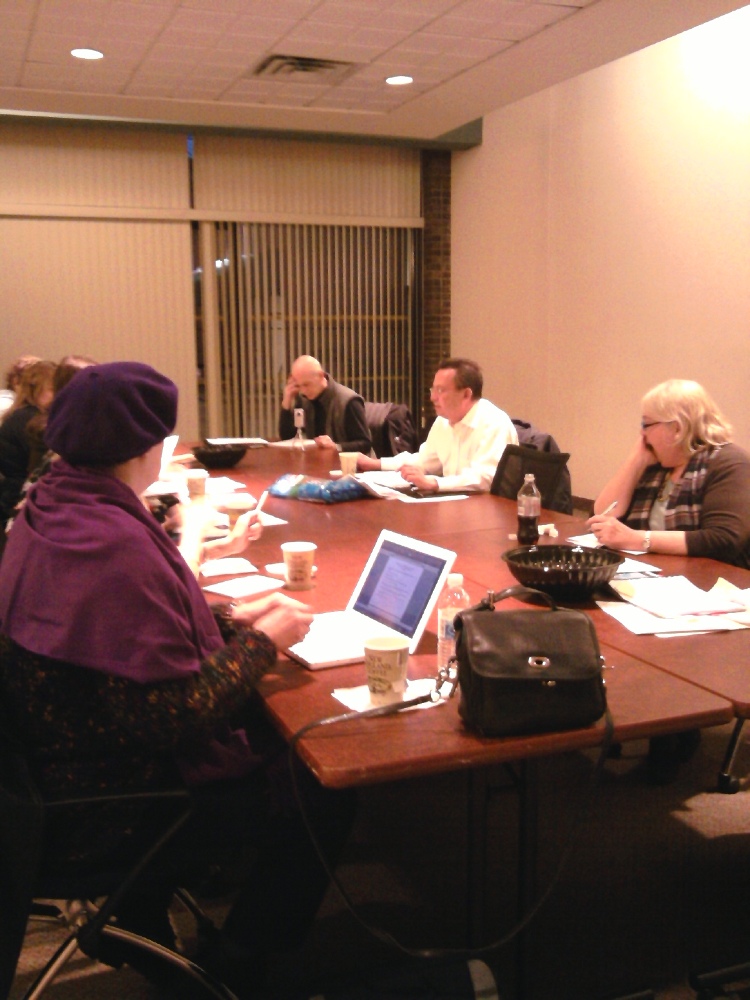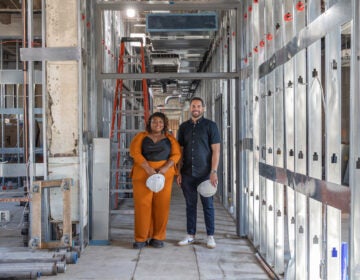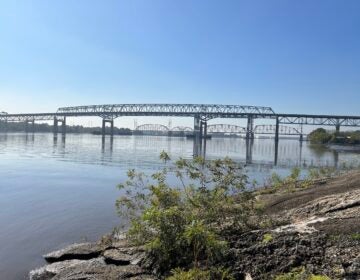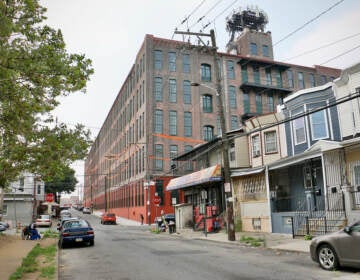CDAG briefed on waterfront planning

Jan. 13
By Kellie Patrick Gates
For PlanPhilly
The two men who will be largely responsible for translating Philadelphia’s goals for the riverfront into a document that will make them a reality did some ground work at Wednesday’s Central Delaware Advocacy Group meeting.
CDAG members represent civic groups and organizations along the waterfront. The Delaware River Waterfront Corporation – the city-created agency responsible for overseeing the creation of the Central Delaware master plan – views the group as an information conduit that links the DRWC with city residents. So it was important that Alex Cooper, founding partner of Cooper, Robertson & Partners, http://www.cooperrobertson.com and John Alschuler, chairman of HR&A Advisors, http://www.hraadvisors.com get to know the group early on, said DRWC President Tom Corcoran.
“It’s the first day of getting the Master Plan work running,” he said. “We wanted it to be here with CDAG.”
Cooper literally wanted to meet and greet – he requested that every board member and alternate present introduce themselves. He, Alschuler and Sarah Thorp – the DRWC master plan manager – then made a few big-picture remarks about the task ahead of them, which is expected to take about a year.
Thorp said there will be at least three “huge meetings” for public comment, plus 15 or 20 smaller sessions with stakeholders.
Cooper and Alschuler made it clear that they will also rely very heavily upon the Vision and Action Plans for the Central Delaware Waterfront – documents put together by Penn Praxis and CDAG after more than a year of public sessions. They also say they understand what a big deal the waterfront has been and should continue to be to Philadelphia.
“You’ve done all the work for us,” Cooper said. “It’s really nice!”
https://www.youtube.com/watch?v=5YCm-QXT_7M
Alschuler fleshed that out a bit. “This waterfront was the origin of your city. It was an enormous source of jobs and employment for several centuries,” he said. “As that great industrial glacier receded, it left behind all of this residual land and left a question of what, having played a great role for two centuries, in the shaping of your city, what’s the role of this land in the shaping of this city for the next century? And I think the vision plan is a very powerful answer to that question.”
The river is a great recreational resource, he said. And if handled right, changes can be made that will not only revitalize the river economically, but re-connect it to its neighborhoods.
https://www.youtube.com/watch?v=OTqs4MthZiE
Cooper and Alschuler said parks and open spaces were definitely the way to start some magic. Just the night before the meeting, the DRWC announced the chosen design for the Race Street Pier – formerly known as Pier 11 – an “early action” part of the waterfront renewal project.
The duo also kept reality close at hand. Cooper said the seven-mile project was the most ambitious he’s seen, and it was important to make choices about what projects would create the most bang for the buck. Alschuler said all the revamped riverfronts that people praise happened through a hefty dose of public investment. Unfortunately, Philadelphia – other cities, too – don’t have a lot of spare change these days. Work must be done to find other sources of money, and encouraging private investment will be critical.
The planner-types spoke only briefly before opening the floor to questions. “We want to listen more than talk,” Thorp said.
https://www.youtube.com/watch?v=oC6HGh_2gpE
They got plenty of suggestions, and in each case said they were already taking the matters into consideration as they worked, or they would now look into them.
CDAG Chairman Steve Weixler said he knows I-95 – which cuts off most of the waterfront neighborhoods from the river – isn’t going anywhere anytime soon. Still, he asked that nothing go into the plan that would prevent all or parts of it from being buried or otherwise reckoned with in the future.
Joe Schiavo said he did not want this plan to be added to the dusty pile of waterfront plans that had come before it with no results. He asked that the team ensure everything that goes into the master plan has a corresponding entry in city code.
https://www.youtube.com/watch?v=MOWvVoxdORc
Matt Ruben said the best way to extend the vibrancy of the waterfront neighborhoods to the waterfront is to expand the street grid. And he cautioned Cooper and Alshuler to keep a look out for development proposals that could hamper the goals of the plan before it is codified.
Paul Boni, an audience member who lives in Society Hill and is also the attorney for Casino-Free Philadelphia, suggested that the planners seek clarity in the somewhat murky area of riparian rights. The riparian lands along the river are owned by the Commonwealth and are public property, he said. There isn’t complete agreement on just how those lands should be defined and where the boundaries are, however. If that happened, there may be more public land to work with than currently thought, he suggested. Cooper said a land use attorney could take a look. Alshuler said regardless of how much land is in public or private hands, sensible and clear zoning and a transparent set of development rules would create the waterfront that’s desired.
Boni also asked that archaeology be done when new projects are built, as recent digs have yielded many artifacts and more historical knowledge.
https://www.youtube.com/watch?v=KM1ADPU5ykQ
John Connors, curator of the on-line Penn Treaty Museum and a long-time Penn Treaty Park activist, asked the planners to work with PennDOT to ensure that sufficient parking remain for Penn Treaty Park even after the new Girard Avenue ramp is completed. Right now, the city looks the other way when people park on Beech Street, he said, but that will likely change once traffic is diverted there. He suggested putting in a traffic light at Palmer Street and allowing parking beneath the expressway, a la South Philly.
Rosanne Loesch of Society Hill Civic said that the planning for the waterfront light rail should not get ahead of the master plan. Corcoran assured her that the work would be done in tandem, as the details of how light rail will work are keys to creating a more walk-able waterfront.
John Scorsone, who represents the Rivers Edge neighborhood, said that a piece of land already owned by DRWC could prove a big, historical attraction to the waterfront. On Water Street, where docks used to be, there’s now a surface parking lot. Beneath it, he said, lie the remains of the city’s waterfront history. Cooper said he saw such sites as a real asset. And “the fact the DRWC already owns that is very helpful.”
Contact the reporter at kelliespatrick@gmail.com
WHYY is your source for fact-based, in-depth journalism and information. As a nonprofit organization, we rely on financial support from readers like you. Please give today.






